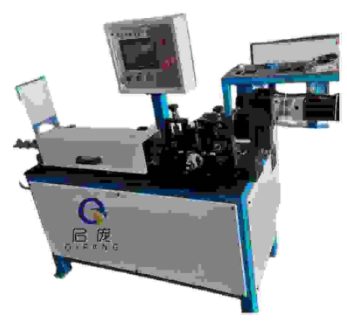How does a wire straightening machine work?
In various industries, the demand for precisely straightened wires is paramount for ensuring the quality and efficiency of diverse applications, from construction to manufacturing. Wire straightening machines have emerged as indispensable tools in achieving this precision.
1. Basic Principles of Wire Straightening:
1.1 Input: Coiled Wire:
Wire straightening machines are designed to process coiled wire, which is often received in bulk from suppliers. The coiled wire serves as the input material for the straightening process.
1.2 Desired Output: Straightened Wire:
The primary goal of a wire straightening machine is to transform the coiled wire into perfectly straight lengths according to the desired specifications. This straightened wire is then ready for use in various applications.
2. Mechanical Components:
2.1 Entry and Exit Guides:
The process begins with entry and exit guides that help guide the coiled wire into and out of the straightening machine. These guides ensure a smooth and controlled path for the wire through the machine.
2.2 Straightening Rolls:
At the heart of the wire straightening machine are the straightening rolls. These are a series of precisely aligned cylindrical rollers through which the coiled wire passes. The number and arrangement of these rolls contribute to the straightening process.
2.3 Adjustable Rollers:
Many wire straightening machines feature adjustable rollers that can be set to specific configurations. This adjustability allows for customization based on the diameter and material of the wire being processed.
3. Straightening Process:
3.1 Tension and Compression:
As the coiled wire passes through the straightening rolls, it undergoes a combination of tension and compression forces. These forces work together to eliminate any bends, kinks, or irregularities present in the coiled wire.
3.2 Elastoplastic Deformation:
The wire experiences elastoplastic deformation during the straightening process. This means that the wire is temporarily stretched and bent beyond its elastic limit, causing it to yield and retain the new straightened shape.
4. Control and Precision:
4.1 Automated Controls:
Modern wire straightening machines often feature automated controls that allow operators to input specific parameters, such as wire diameter and straightening tolerance. These controls ensure a high level of precision in the straightening process.
4.2 Feedback Systems:
Some wire straightening machines incorporate feedback systems that continuously monitor the straightened wire. These systems make real-time adjustments to the straightening rolls based on variations in the wire's characteristics, further enhancing accuracy.
5. Cutting Mechanism:
5.1 Optional Cutting Unit:
In some wire straightening machines, an integrated cutting unit is included to trim the wire to the desired length. This feature streamlines the production process, delivering straightened and cut wire in a single operation.
6. Quality Assurance:
6.1 Visual Inspection:
After the wire is straightened and cut, it may undergo visual inspection to ensure that it meets the required quality standards. Any remaining imperfections or irregularities can be identified and addressed during this quality assurance stage.
7. Applications of Straightened Wire:
7.1 Construction Industry:
Straightened wire is commonly used in the construction industry for reinforcing concrete structures. It provides the necessary strength and stability required in applications such as concrete slabs, beams, and columns.
7.2 Manufacturing and Fabrication:
In manufacturing and fabrication processes, straightened wire is utilized for a wide range of applications, including the production of wire forms, springs, and components for various industries.
7.3 Automotive and Aerospace:
The automotive and aerospace industries rely on precisely straightened wire for manufacturing components that demand high precision, such as springs, clips, and connectors.
A wire straightening machine represents a crucial link in the production chain, transforming coiled wire into perfectly straight lengths with exceptional precision. By harnessing mechanical principles, adjustable rollers, and advanced control systems, these machines contribute to the efficiency and quality of various industries that depend on straightened wire for their applications. Understanding the inner workings of a wire straightening machine highlights the engineering prowess required to achieve the desired level of accuracy in wire processing.


